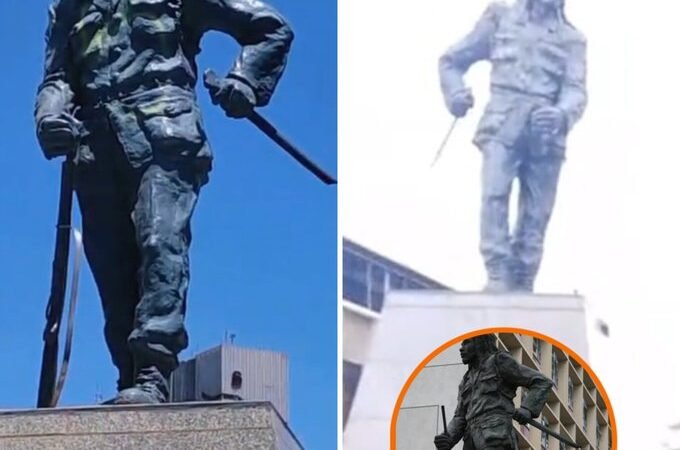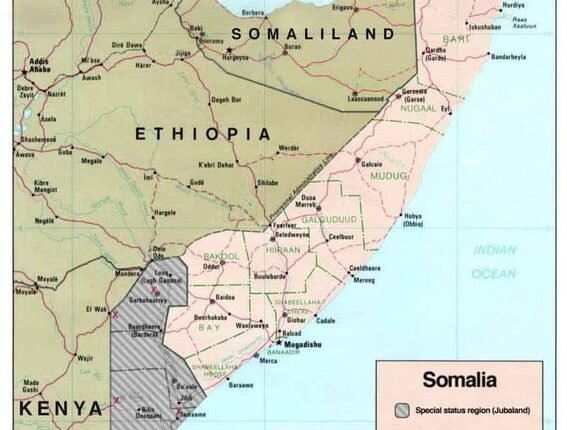The vandalism, as reported, of the Dedan Kimathi statue in Nairobi Central Business District on July 9, 2025, has sparked renewed controversy surrounding Kenya’s contentious engagement with its colonial history, national symbols, and public memory. The theft of the rifle from the bronze statue of Kimathi, a mythical Mau Mau freedom fighter killed by the British in 1957, represents something greater than mere petty vandalism. It is a symbolic moment that touches on national identity, historical justice, and the ongoing struggle over who is remembered and how.
Dedicated in 2007 by then President Mwai Kibaki, the statue was a milestone acknowledgment of Kenya’s anti-colonial struggle breaking from the silence and repression that characterized the regimes of Presidents Jomo Kenyatta and Daniel arap Moi, both of whom eschewed officially celebrating the Mau Mau out of the political sensitivities of the movement.
The Kimathi monument, a bronze figure standing defiantly with a rifle in one hand and a dagger in the other, symbolized not only his personal bravery but also the broader struggle for Kenyan self-determination. Its placement in the heart of Nairobi’s CBD gave it both symbolic and civic visibility, allowing everyday citizens to interact with one of the most controversial and revered figures in the country’s anti-colonial history.
The timing is everything. Kenya has been experiencing extensive protests, economic complaints, and state repression. On June 25, 2025, protests about governance, inequality, and state brutality were reported in 27 counties nine individuals murdered by gunfire, said local human rights observers. Such incidents have fueled a spreading perception of disenfranchisement, particularly among young people.
In this context, the act of vandalizing a national monument particularly one representing rebellion and sacrifice takes on new meaning. Though no group has claimed responsibility, the alleged theft of the rifle appears to be a deliberate act aimed at making a symbolic statement about either the perceived failure of the post-independence government to live up to Kimathi’s ideals, or the hollowing out of Kenya’s historical narratives.
The 2018 Nairobi University study of anthropology brought out how monuments and statues in Kenya would be areas of contested memory, where some citizens view them as symbols of pride while others view them as hypocrisy of the official kind. The Kimathi statue may now fall into this latter category for a generation that is struggling with police brutality, unemployment, and political betrayal.
This is not the first instance where a symbolic statue has been defaced in Kenya. In 2015, Queen Victoria’s statue a colonial relic in Nairobi too was covered in red paint and anti-colonial graffiti amid increased public outcry against Britain’s historical atrocities. Subsequently in the same year, the British government co-funded a Mau Mau war memorial at Uhuru Park to issue a formal apology for colonial era killings and torture.
Yet even with such memorials in place, public frustrations remain unresolved. Critics argue that while statues like Kimathi’s serve as potent reminders of the past, they often sit disconnected from the realities of the present where systemic inequality and government corruption betray the very ideals these freedom fighters stood for.
The vandalism also places the rewriting of Kenya’s history into bold relief. Kimathi and the Mau Mau were for decades demonized or erased by the state. It was not until the Constitution of 2010, which recognized a want to honor national heroes, that figures like Kimathi were officially welcomed. But official recognition has not guaranteed public adoration.
The vandalizing of the statue could also be seen as a broader critique of performative nationalism where politicians cite the names of freedom fighters without attempting to address current structures of oppression.
The government assured that it will investigate the incident and replace the monument, but the bigger question remains: How can Kenya negotiate its history so that it speaks to present day realities?
To merely restore the statue and ignore the root problems of the people especially the youth would be to risk turning the monument into another source of broken promises.
Dedan Kimathi statue defacement is not just a crime politically and culturally, it is a moment. It’s an indication of a nation struggling with identity, history, and fate. Monuments do not change, but the societies that surround them do. They change, they rebel, reinterpret, and occasionally revolt.
As Kenya marks nearly 70 years of living after Kimathi died, his portrait tattered but standing tall forces the nation to wonder: Are we truly free, or are we still bound by the chains of betrayal, poverty and buried history?
Vandalism of Dedan Kimathi Statue Sparks Fresh Debate on Kenya’s Colonial Legacy and National Identity



